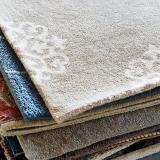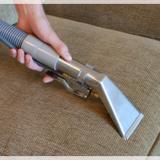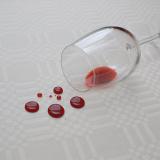Our Blog
Please feel free to post a question or just join the conversation.

The Science Behind Fabric Protection for Carpets and Upholstery
When investing in high-quality furniture, rugs, or carpeting, protecting those fabrics is just as important as keeping them clean. That’s where professional fabric protection treatments come in. At Alec’s Carpet & Upholstery Cleaning LLC, we’ve specialized in this service for decades, helping Boston-area homeowners extend the life of their finest furnishings.
Let’s break down the science behind fabric protection and why it’s worth considering for your home.
What Is Fabric Protection?
The most widely used—and most effective—fabric protection in the cleaning industry is fluorochemical treatment. Professionals choose fluorochemicals because they:
Repel both water-based and oil-based stains
Lower the surface energy of fibers, making it harder for spills to penetrate
Prevent stains from bonding with dyes or damaging fibers
Instead of allowing liquids or soils to sink in, a quality fabric protector causes them to bead up on the surface, giving you time to blot them away before they cause permanent staining.
Water-Based vs. Solvent-Based Fabric Protectors
Not all fabric protectors are the same. Professionals use different solutions depending on whether they are treating carpets, rugs, or upholstery.
Water-Based Protectors
Designed for carpets and rugs
Safe for latex backings (no damage from penetration)
Provide full coverage on carpet fibers
Solvent-Based Protectors
Preferred for upholstery
Penetrate fibers evenly without causing shrinkage or color bleeding
Do not alter the look or feel of delicate fabrics
Typically use odorless mineral spirits as the carrier solvent, which are safe for in-home use
The Science: Dyne Ratings and Fabric Absorption
To understand how fabric protection works, you need to know about dyne ratings—a measurement of surface energy or how easily a liquid can “wet” or penetrate a fiber.
Higher dyne rating = liquid resists penetration
Lower dyne rating = liquid penetrates more easily
For example:
Water has a dyne rating of about 73
Ammonia is about 24
Cleaning detergents fall between 25–55, which is why they help water penetrate and remove soils
Now, imagine a fabric with a dyne rating of 80. If grape juice with a dyne rating of 30 spills on it, the juice will absorb into the fabric. But if you apply a fabric protection treatment that lowers the fiber’s surface energy to a dyne rating of 20, the grape juice can’t penetrate—the spill will bead up instead.
The Limits of Fabric Protection
While fabric protection is highly effective, it’s not indestructible. Two factors can still break through:
Heat – Hot liquids like tea or coffee can lower their dyne rating and penetrate fabric.
Acids – Strong acidic substances can eat through protective barriers if left untreated.
👉 That’s why the golden rule is: act quickly. Even with fabric protection applied, addressing stains right away will ensure the best outcome.
Why Choose Alec’s for Fabric Protection in Boston?
With over 55 years of experience, Alec Houle has seen fabric protection technology evolve since the 1970s. Unlike companies tied to a single supplier, Alec’s Carpet & Upholstery Cleaning LLC tests and evaluates all major protectors on the market to ensure our clients always receive the best and most advanced fabric protection available.
Whether for fine upholstery, oriental rugs, or luxury carpets, we tailor the right solution for each piece, giving your home the protection it deserves.
Contact the Fabric Protection Experts
Don’t leave your investment unprotected. For the most trusted fabric protection services in Boston, Wellesley, Weston, and Cape Cod, call the experts at Alec’s Carpet & Upholstery Cleaning.
📞 Call us today at 781-871-1415
📧 Email: Alec@Alecscarpetandupholsterycleaning.com
🌐 Learn more: Fabric Protection Services
note_stackRelated Posts
Blog Categories
-
Carpet & Upholstery Cleaning (15)
-
 Carpet Cleaning (15)
Carpet Cleaning (15)
-
 Spot Cleaning (14)
Spot Cleaning (14)
-
Uncategorized (5)
-
 About Rugs (5)
About Rugs (5)
-
 Upholstery Cleaning (5)
Upholstery Cleaning (5)
-
 About Carpets (3)
About Carpets (3)
-
Outdoor Cushion Cleaning (2)
-
 Fabric Protection (2)
Fabric Protection (2)
-
 Leather Upholstery (2)
Leather Upholstery (2)
-
 Fabrics (1)
Fabrics (1)
-
 Stains on Carpets (1)
Stains on Carpets (1)
-
 Discussions on Carpet & Upholstery (1)
Discussions on Carpet & Upholstery (1)
-
 News (1)
News (1)
